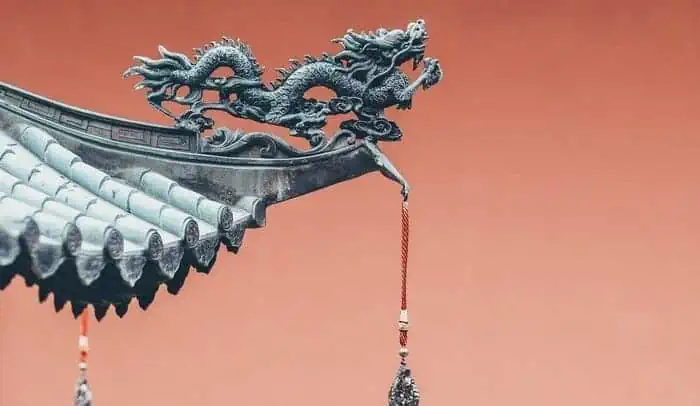Imagine every product you source turns into a winner becomes the best seller in the category.
Unfortunately, that’s not how it works.
We’ve gone through countless painful steps in our FBA journey.
Our painful product experience

Here’s a short list of credentials attached to our business.
- I’ve ordered 10,000 units which were all 100% defective, which we fixed by hand at home, garage and anywhere we could.
- I reordered and another 10,000 defects came.
- After 2 months of selling, people were selling an exact copy of our product.
- I found people posing as buyers in order to find our supplier.
- I was in a battle with China sellers and I ran away with my tail between my legs.
- Our mold was shopped around from factory to factory.
- Our supplier refused to send the mold we owned, to our new supplier.
The worst thing?
Everything noted above was for a single product.
What happens if you don’t document everything

Whether you are running a small business at home, or have little to no standard operating procedures (SOP), we made the same mistake multiple times because we didn’t want to put in the little effort to document and make checklists.
Such a simple task ended up costing us over $20k of product and labor, not to mention overhead and other soft costs associated with this fiasco.
When first shipment of defects came in, that was our fault for not sending an inspection company to verify the QC.
So for the second order, we figured out a way to eliminate a lot of the manual process that was causing the issue.
Doh…
It wasn’t made to spec again and so we ended up with another 10,000 units of defects.
Because I didn’t understand the Chinese culture of doing business, I applied western thinking to the business relationship.
“I’m sure it won’t happen again.”
“I’ve explained our standards to them and they said they understood.”
Those two thoughts have cost us tens of thousands of dollars.
It’s why we now meticulously enforce suppliers to sign Chinese and English NNN agreements and a detailed manufacturing agreement covering our expectations and how issues will be handled.
With all these mistakes and heartbreak under our belt, here’s a framework of how we protect our business and products from China suppliers and sellers.
I call it a framework and not a checklist because it has to be adapted for each situation and business.
Understand China’s strength and weakness

Our core goal is to create products that China sellers will have a hard time copying. They can copy the idea, but not directly rip off our products.
We also want to sell timeless products. Not fad items like shoes with wheels, or fidget spinners and other short term thinking products.
To do this, we try to broadly understand the areas where we have and don’t have an advantage over China.
Where China has an advantage
First, China has strong advantages in:
- speed
- copying
- shipping
- manufacturing and infrastructure
- raw materials
- ignoring rules and regulations
Speed – you can find or produce a product super fast. The China network of suppliers and sub-factories makes it possible to create a new product in 30-60 days.
Copying – send them a sample and they can copy it.
Shipping – very fast and cheap when originating from China to all around the world.
Manufacturing and infrastructure – tons of expertise in all forms of manufacturing. Each region specializes in a certain product/industry.
Raw materials – can find any form of raw material. Makes everything efficient and cost effective when everything can be done in-house in China.
Ignoring rules and regulations – as an exporter they can get away with a lot when doing business internationally. The Lumber Liquidators flooring scandal is an example where the factory was making flooring with extremely high levels of formaldehyde – cancer causing chemicals.
But this isn’t everything because China also has plenty of weaknesses which you can use to your advantage.
China’s weaknesses
China has weaknesses in:
- low quality (a.k.a if it works, it’s good enough) being the default cultural standard
- quick cash mentality
- bad at formulations and liquid products
- low food quality
- being across the ocean
- “Made in China” reputation
- ignoring rules and regulations
This does not apply to every company, but something to keep in mind. You never know.
Low quality – suppliers will and do cut corners and degrade quality without you noticing in order to shave off cost. This way, they expand their own margins and you don’t know until it’s too late. Rightfully called “quality fade“.
Quick cash – focus is on getting money now, instead of a long term relationship where everyone wins.
Formulations, liquid, food products – there is no way I’ll knowingly buy made in China food, supplements or liquid products. Same with beauty, pet food or other liquid products requiring formulation and quality control. I’ve never heard a woman say they want the latest made in China lipstick.
Being across the ocean – If a product is complex and expensive, it can be cheaper to manufacture in the US. Make the mold in China and have it shipped to your country. Then you get the Made in USA or Germany label with lower costs, lower transport fees, taxes etc.
Made in China – Despite some of the best and expensive products being made in China (iPhone and many electronics, furniture), their reputation won’t go away anytime soon.
Ignoring rules and regulations: Many baby products require documentation and certifications in order to sell in the US. Other health related products governed by the FDA all require certification and documentation. Many factories will claim they are compliant, but their certification expired 5 years ago, or it’s for a different product line.
What we do to protect our business from China and copycats

With all the hair pulling losses we’ve experienced, our framework for new products and business is to:
- sign legal documents in Chinese and English like NNN, supplier agreements, vendor scorecards
- spend more upfront to create barriers of entry like quality molds, applying for patents
- over-engineer the product where it makes sense
- find backup factories we can switch to
- file trademarks, design and utility patents in the US and China
- create culture related items that China won’t catch onto quickly – organic food, liquids, service related
- leverage established brands in the US – wholesaling
In part 2, I go through the points above in detail and how it protects us from China and copycats.
Comments
Related Posts

10 Profitable Product Categories for Amazon Affiliates 2025
What you’ll learn Amazon is a favorite for experienced and…

Unlock the Secret to a Profitable Automated Amazon Store: How to Build a Hands-Free Income Stream
Ever dreamed of running a profitable Amazon business while sipping…

Master Amazon New Restricted Keywords: A Seller’s Guide to Success
Changes to Amazon’s restricted keywords list have taken a lot…





Leave a Reply